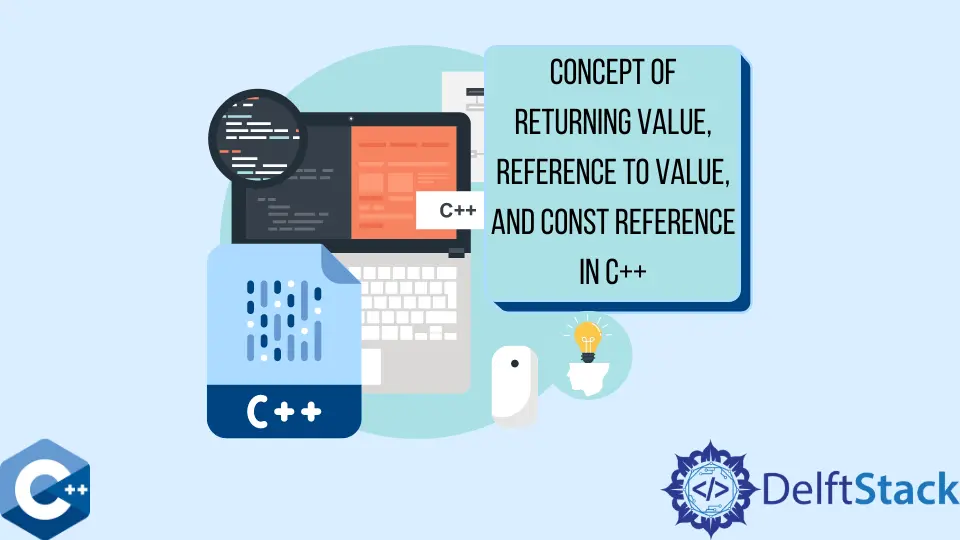Concept of Returning Value, Reference to Value, and Const Reference in C++

When working with C++, understanding how to manage data effectively is crucial for building efficient and robust applications. The concepts of returning value, reference to value, and const reference are fundamental to grasping how C++ handles object management. Returning an object by value means you’re returning a copy of that object, which can sometimes be costly in terms of performance.
This article will delve into these concepts, providing clarity on when and how to use them to optimize your code, ensuring you write efficient C++ programs.
Understanding Returning by Value
Returning by value means that when a function returns an object, it returns a copy of that object. This can be beneficial in certain scenarios, particularly when you want to ensure that the original object remains unchanged. However, this approach can lead to performance issues, especially with large objects, as copying data can be resource-intensive.
Consider the following example, where we define a simple class MyObject and a function that returns an instance of this class by value.
class MyObject {
public:
int data;
MyObject(int val) : data(val) {}
};
MyObject createObject(int val) {
MyObject obj(val);
return obj; // Returning by value
}
In this code, createObject creates an instance of MyObject and returns it by value. This means a copy of obj is made when it is returned, which can be expensive if MyObject contains large amounts of data.
The downside of returning by value is that it can lead to unnecessary copying of objects. If MyObject were to contain complex data or large arrays, this would incur a performance penalty. In such cases, it is often better to return by reference or use move semantics to avoid the overhead of copying.
Reference to Value
Returning by reference allows a function to return a reference to an existing object rather than a copy. This can significantly improve performance, especially when dealing with large objects. However, it’s essential to be cautious, as returning a reference to a local object can lead to undefined behavior since the object will be destroyed once the function exits.
Here’s an example illustrating how to return a reference to an object:
class MyObject {
public:
int data;
MyObject(int val) : data(val) {}
};
MyObject& getObject(MyObject& obj) {
return obj; // Returning a reference
}
In this example, getObject takes a reference to an existing MyObject and returns that reference. This avoids the overhead of copying, making it more efficient.
While this method is efficient, it comes with risks. If the object passed to getObject goes out of scope, any further attempts to access that reference will lead to undefined behavior. Therefore, it’s crucial to ensure that the lifetime of the referenced object is managed correctly.
Const Reference
Using a const reference allows you to return a reference to an object while ensuring that the object cannot be modified. This is particularly useful when you want to return large objects without copying them but also want to protect the original object from unintended modifications.
Here’s how you can implement this:
class MyObject {
public:
int data;
MyObject(int val) : data(val) {}
};
const MyObject& getConstObject(const MyObject& obj) {
return obj; // Returning a const reference
}
In this code, getConstObject takes a const reference to MyObject and returns it. This means that while you avoid copying, you also ensure that the original object remains unchanged.
This approach is particularly beneficial when working with large data structures, as it minimizes overhead while maintaining safety. By using const references, you can provide read-only access to objects, which is a common practice in C++ programming.
Conclusion
Understanding the concepts of returning value, reference to value, and const reference in C++ is essential for writing efficient and effective code. While returning by value provides safety, it can be costly in terms of performance. In contrast, returning by reference or const reference can enhance efficiency but requires careful management of object lifetimes. By mastering these concepts, you can optimize your C++ applications and make informed decisions about resource management.
FAQ
-
What is the main difference between returning by value and by reference?
Returning by value creates a copy of the object, while returning by reference provides access to the original object without copying. -
When should I use const reference in C++?
Use const references when you want to avoid copying large objects but still want to provide read-only access to them. -
What are the risks of returning a reference to a local object?
Returning a reference to a local object can lead to undefined behavior since the object will be destroyed once the function exits. -
How does move semantics relate to returning values in C++?
Move semantics allows resources to be transferred rather than copied, which can improve performance when returning large objects. -
Can I return a reference to a temporary object in C++?
No, returning a reference to a temporary object is dangerous as it will be destroyed at the end of the full expression, leading to undefined behavior.
Muhammad Adil is a seasoned programmer and writer who has experience in various fields. He has been programming for over 5 years and have always loved the thrill of solving complex problems. He has skilled in PHP, Python, C++, Java, JavaScript, Ruby on Rails, AngularJS, ReactJS, HTML5 and CSS3. He enjoys putting his experience and knowledge into words.
Facebook